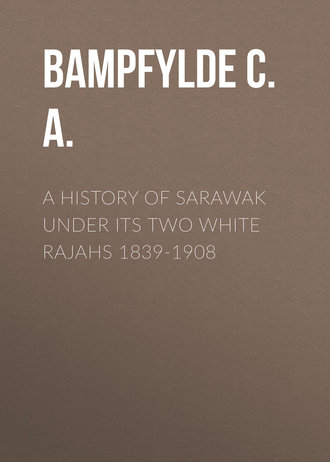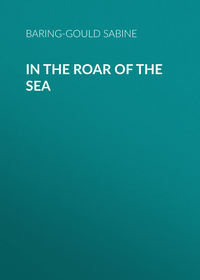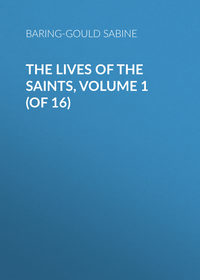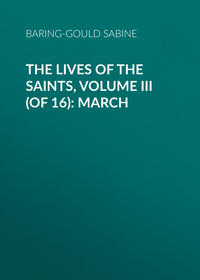 полная версия
полная версияA History of Sarawak under Its Two White Rajahs 1839-1908
He found affairs in his little raj had not been conducted quite so well as he could have wished, and that there were evidences of renewed activity on the part of the pirates. Pangiran Makota was in power at Bruni, and that was a menace to the good conduct of both the external and internal affairs of the Sultanate. The Sultan had been in direct communication with the Sekrang Dayaks, amongst whom both Sherip Mular and Sherip Ahmit were busy intriguing, and collecting the dissatisfied party which had been scattered. Hostile operations on the part of the Saribas were only checked by the arrival of the Mæander.
On September 14, the Rajah was joined by his nephew, Captain James Brooke-Johnson,154 of the Connaught Rangers, as his official A.D.C. He assumed the surname of his uncle, and was given the title of Tuan Besar. Although he was always looked upon as the heir-presumptive, the title of Rajah Muda was only conferred upon him when he was officially and publicly recognised by the Rajah as his heir in 1861.
"To give a spirit of national pride to the natives," the Rajah now granted the country a flag,155 and this was hoisted with due ceremony on September 21. Viscount Palmerston, in a despatch dated June 20, 1849, subsequently conveyed the approval of H.M.'s Government of the flag having been hoisted, in order, with the sanction of the British Government, to afford a recognised permanency to the country.
The Rajah then sailed in the Mæander to Labuan, where he was busy for some time arranging and organising the colony, but, falling a victim, with many others, to the insalubrity of the climate, he took a sea voyage in the Mæander, visiting several places on the north-west coast and passing on to Sulu, where he established friendly relations with the Sultan, and paved the way to a treaty being effected, by which Sulu would be placed within the sphere of British influence. He returned to Labuan in January, 1849, nearly recovered, and the next month was back in Sarawak again, to face an anxious time, a year of trouble and strife.
The Rajah had done all he could in England to move the British Government to take energetic action effectually to stamp out piracy, especially in regard to the Saribas and Sekrang, amongst whom the peaceable party had now been completely overborne by the piratical faction, and this would have been prevented had the British Government sanctioned the Rajah's scheme of building a fort in the disturbed district. Alone, he was powerless to effect much, if anything. The Mæander had been specially fitted for taking action against these pirates, and her captain specially appointed on account of the experience he had already gained in dealing with them, as it was intended that the frigate should be detailed for this service; but trouble having occurred in China, she was recalled by the Admiral, and the Rajah was left with the H.E.I.C. Nemesis only, a steamer quite inadequate for the purpose; and, being required to keep up communication between Labuan and Singapore, her station being at the latter place, she could be only occasionally placed at his disposal.
The departure of the Mæander, and the Rajah's long absence in the north, had emboldened the Saribas and Sekrangs to prepare for fresh atrocities. Their insolence had, moreover, so increased that they went so far as to send the Rajah a message of defiance, daring him to come out against them, taunting him with cowardice, and comparing him to a woman.156
On March 2nd, the Rajah received news that a large pirate fleet of one hundred prahus had put to sea, and, after having captured several trading vessels, the crews of which they had put to death, had proceeded up the Sadong river, where they had killed upwards of one hundred or more Malay men, women, and children, and had carried others into slavery. Within the three previous months they had killed three hundred persons, burnt several villages, and captured numerous prahus.157 This expedition was led by the Laksamana, the Malay chief of the Saribas;158 it was checked at the town of Gedong, which was well prepared for defence, and too much on the alert to be taken by surprise.
An artifice of these pirates, and they never attempted by force what could be acquired by stratagem, was this: some of the party remained behind and assumed the clothes of their victims, and the umbrella-shaped hats of palm leaf commonly used by those harvesting in the sun, which would completely conceal their features; thus disguised they paddled down stream, and called in Malay to the women to issue from their hiding-places, as they had come to convey them to a place of safety. The poor creatures, supposing that these were of their own tribe, ran down with their children in their arms only to be speared and their heads hacked off by these wolves in sheep's clothing.159 On the last day of February, a numerous and industrious population was gathering in the harvest, and on March the 1st every house was plundered, and scattered about the fields were the mangled bodies of the reapers, and in the villages lay the headless trunks of men, aged women, and children too young for captivity.
Not a day passed without news reaching Kuching of some village burned or of some trading vessel captured. After the attack on Sadong, while the Saribas hovered along the coast, crowds of refugees arrived in Kuching. From all parts they came; from the river of Matu alone twenty prahus full of men, women, and children, and from Kalaka many hundreds. They said that they could endure life no longer in their own country, continually engaged in resisting these murderous attacks, and losing numbers of their people at the hands of the Sekrangs and Saribas.
"No news except of Dayaks, and rumours of Dayaks. Dayaks here, Dayaks there, and Dayaks everywhere," so wrote the Rajah.
The Kalaka river had also been laid waste. Hunt in 1812 described Kalaka as being one of the principal ports of trade on the north-west coast,160 and the country as producing large quantities of grain. But this was before the Sea-Dayaks had become pirates. In 1849, the river had been so devastated by piratical attacks that all cultivation had been abandoned, and its once flourishing town and villages deserted, with the exception of two that were small. "Never before had I been so struck with the irreparable mischief done by the piratical tribes, as when I saw this lovely country so completely deserted," so wrote Mr. S. St. John in 1849.
The ravages of these murderous Dayaks had been peculiarly destructive in the delta of the Rejang, once well populated by the quiet and industrious Melanaus, the producers of the Bornean sago brought to the market of Singapore. The pirates not only destroyed the villages and plantations, but captured many richly laden prahus, freighted with the produce of this district on their way to dispose of their lading in the British Settlement of Singapore, and in Sambas and Pontianak. Like the Malays of Kalaka, nearly all the inhabitants had fled, most to Sarawak, some to other places.
During the first six months of 1849, some 600 persons fell victims to these savages; it must be borne in mind that the districts inhabited by these people and those attacked by them were then in Bruni territory, and outside the raj of Sarawak.
In 1849, it was reckoned that the Saribas had 6000 fighting men, the Sekrangs an equal number, and those Sekrangs and Saribas who had moved across to the Kanowit, Katibas, and Poi, affluents of the Rejang river, could muster 8000 warriors,161 making, with their Malay allies, a total of 25,000 men living on piracy and murder. Secure on their rivers, in their stockades, in their jungles, in their large and well-constructed boats, and in their numbers, they scoffed at warnings, and proceeded from crime to crime until the whole country from Bruni to Sarawak was nearly their own.
In desperation, and with the hope of checking these outrages, the Rajah at once started against the pirates with his own little flotilla of some twenty-four war prahus manned by 800 Malays, but he was driven back by the north-east monsoon, perhaps fortunately, as his force was totally inadequate. Then the Nemesis, under Commander Wallage, arrived, and the Rajah, feeling he was now strong enough to effect something, sallied forth again on March 25, with the same native force and four of the boats of the Nemesis. The bala162 was augmented by eighty-four native prahus with over 2000 friendlies, all thirsting for revenge. Both branches of the Kalaka were ascended, and from the left-hand branch the native levies crossed over into the Rembas, a large affluent of the Saribas, and here several strongholds were destroyed, with large quantities of rice and salt; the enemy were, however, absent on an expedition, and but few fighting men were left behind. The Rajah then proceeded up the Saribas, the entrance of which the Nemesis had been sent on to guard, and at the mouth of the Rembas branch met a large force of Saribas Dayaks which hurriedly retreated. These were on their way to effect a junction with the Sekrangs, the Malay town of Banting up the Lingga being the objective. Ten prahus of Sadong friendlies on their way home were met and attacked at night by these Sekrangs, who had a force of 150 bangkongs, but, the Balau Dayaks opportunely coming to the assistance of the former, the Sekrangs were defeated and driven back to their own country. This well-contrived expedition then terminated in a return to Sarawak, and though the pirates had not suffered any great loss, especially in lives, a severe check had been administered, and by preventing a junction between the Saribas and Sekrangs their piratical venture for that occasion had been spoiled.
After his return from this expedition the Rajah took advantage of the lull that was certain to follow, for the Dayaks would lie low for a time fully expecting to be again attacked, and proceeded to visit his little colony at Labuan. From thence he passed on to Sulu, where he concluded a commercial treaty with the Sultan, returning to Kuching at the end of May. In the meantime Admiral Sir Francis Collier had despatched the Albatross, Commander Farquhar,163 to Sarawak, to take the Mæander's place, and she had arrived at Kuching before the Rajah's return in the Nemesis, and had there been joined by the Royalist, Lieutenant Everest. Preparations were pushed forward to deliver a final blow to the Saribas and Sekrang pirates, who, now the Ramathan, or fast month, had commenced, considered themselves safe, under the firm persuasion that the Rajah would not move against them so long as it lasted, out of regard for the religious scruples of the Malays.
The expedition started on July 24. It comprised the Nemesis, the Royalist, and the Ranee (the Mæander's little steam tender), seven men-of-war boats, and the Rajah's Malay force of eighteen war prahus manned by 640 Malays. At the mouth detachments of Lundu and Balau Sea-Dayaks, and Malays from Samarahan and Sadong joined, which brought the native force up to a total of seventy prahus with 2500 men. The Royalist was towed by the Nemesis into the Batang Lupar, and left to guard that river off the mouth of the Lingga, and the latter went on to the entrance of the Saribas, where, with the ships' boats, she took up her position. The main force joined her on the 28th, and the same evening information was received that a large piratical bala, under the command of the Datu Patinggi of Saribas and the principal Malays, had left the Saribas two days previously and had gone northwards. The Rajah and Captain Farquhar immediately determined to intercept them on their return. With twelve war prahus and two men-of-war cutters the Rajah took up a position across the mouth of the Kalaka, to prevent the pirates gaining their way home by that river. The Nemesis, with the rest of the force, blocked the Saribas, and the only other route open to them via the Batang Lupar was guarded by the Royalist. There was an alternative way back, a long one, up the Rejang and Kanowit, but they were not likely to take this. On the evening of the 31st, a rocket sent up from the Rajah Singha,164 the Rajah's war prahu, announced the approach of the enemy. They came on boldly, and, perceiving the force at the entrance of the Kalaka, but not the more formidable one hidden by the long promontory separating the mouths of the two rivers, dashed on for the Saribas with defiant yells, to encounter in the growing darkness greater peril, and thus commenced the most famous fight in the Sarawak annals, which brought a just retribution on these savage pirates and for ever broke their power, the battle of Beting Maru.165 Met with showers of grape, cannister, rockets, and musketry from the Nemesis and the boats, and the savage onslaughts of the native levies mad for revenge, well led by the Rajah's English and Malay officers, and with their retreat intercepted by the Rajah's division, the pirates were soon thrown into confusion, and thought only of escape. But cut off in all directions, for five hours, in bright moonlight, they had to sustain a series of encounters extending over a distance of ten miles. At midnight all was over. About a dozen bangkongs escaped, whilst over a hundred were destroyed, and the enemy had lost about 300 killed. This loss would have been far heavier had the Rajah allowed his native forces to intercept the retreat of the great numbers who had landed and escaped into the jungle, and this could have easily been effected; as it was, 500 died of wounds, exposure, and starvation, or were cut off before they could reach their homes. Of those who succeeded in escaping up the Saribas that night was the famous Dayak chief Linggir, who, with seventeen war-boats, had made a desperate attack on the Nemesis, which resulted in the destruction of all the boats with their crews except his.166
Had this expedition started but a few days earlier, the mischief that had been done would have been prevented, though that mischief was far less than it would have been had not the pirates been forced to beat a hasty retreat on receiving news that so powerful a force was out against them. They had attacked Matu, but that town was found to be too well prepared to be carried without considerable loss, and, their aim being not glory but to procure heads, captives, and plunder, with the least possible risk to themselves, they retreated in search of easier prey after sustaining a loss of ten killed, but not before they had taken a detached house in which they obtained seven heads and captured four girls. Palo they had plundered, and had there seized three girls;167 they spared the place as being the main source of their salt supply. Two vessels trading to Singapore were captured, and the crew of one were all killed. Serikei proved too strong for them. A detachment had gone westward, and off Sambas they killed some Chinese fishermen and took their heads. At Sirhasan, one of the Natuna islands, they captured a trading vessel, and on their way back to join the main fleet attacked the Malays living at the mouth of Muaratebas, but were repulsed after a desperate fight. A trading prahu was there seized, the owner and five of the crew being killed. Coming across Abang Husin, a nephew of the Datu Temanggong, they killed him and his boat's crew of six, after a gallant defence.
A couple of days having been spent in destroying the captured bangkongs and securing prisoners, the expedition proceeded up the Saribas river. After some exciting episodes and hard work in cutting their way through innumerable trees, which had been felled across the river to impede their progress, the force reached Paku, which was taken and burnt for the second time. The expedition then proceeded up the Rejang, to punish the Sekrang Dayaks living in the Kanowit. Eighteen villages were destroyed, and the country laid waste for a hundred miles. This done, the Rajah returned to Kuching with the whole force, arriving there on August the 24th. With him came many Serikei people, who wished to escape from the tyranny of Sherip Masahor,168 an infamous and intriguing half-bred Arab chief, who appears to have but lately settled in the Rejang as the Bruni governor, and who in the near future was to cause the Sarawak Government considerable trouble.
After the battle of Beting Maru, the well-inclined Malay and Dayak chiefs of the Sekrang were once more raised to power, and the Rajah built a fort at Sekrang, of which Sherip Matusain, who has been before mentioned as having taken a prominent part on the side of the Sarawak Malays in the rebellion against Bruni, was placed in charge. The fort was built to uphold the friendly and non-piratical party against the interior piratical tribes, to prevent the latter passing down to the sea, and as a position for the advancement of commerce. It was built entirely by Sekrang Malays and Dayaks under the supervision of Mr. Crookshank, and when Mr. Brereton169 went there shortly afterwards to take charge, at the request of the natives that a European might be placed over them, he was entirely dependent on their goodwill, having no force of any sort, to support his authority.
The Saribas and the Sekrangs now submitted, the former too utterly broken to do further mischief by sea, and the latter frightened by the lesson that had been administered to their allies and themselves,170 and by the establishment of a Government station in their district. Such was the effect of this chastisement that piracy was almost completely put an end to in these turbulent tribes; then had the land rest to recover, the waste places to revive, the towns to be rebuilt, and the population to increase. In but a very few years the bulk of these very tribes which had been the scourge of the country were reduced to peaceable and industrious citizens.
But trouble far-reaching, on which he had not calculated, was in store for the Rajah through this expedition. It came at a time when he was weakened in health from continuous exposure and the severe strain he had undergone, which had brought him near death's door, and it came from a quarter the least expected. He "had risked life, given money, and sacrificed health to effect a great object;"171 and had made the coast from cape Datu to Marudu bay as safe as the English Channel to vessels of all flags and all sizes, and now he had to bear with the malicious tongues and persecutions of the humanity-mongers of England, who were first prompted to attack the Rajah by his discarded agent, Mr. Wise. This man was embittered against the Rajah for his refusal to sell Sarawak to a company; by being called to account for a loss he had caused the Rajah of some thousands of pounds; and by some unfavourable comments the Rajah had made on his actions, which had come to his knowledge owing to certain private letters of the Rajah not intended for his eyes having fallen into his hands. Wise had offered to make the Rajah "one of the richest commoners in England," and presumedly saw his way to becoming one too, but the Rajah preferred "the real interests of Sarawak and the plain dictates of duty to the golden baited hook."172
Cobden, Hume, Sidney Herbert, and afterwards Gladstone, as well as others of that faction, took up the cause of the pirates, and the Rajah and the naval officers who had been engaged since 1843 in suppressing the Saribas and Sekrangs were attacked with acrimony as butchers of peaceful and harmless natives – and all for the sake of extending the Sarawak raj. The Spectator and the Daily News bitterly assailed the Rajah, relying upon information supplied through the medium of a Singapore newspaper; and the Peace Society and the Aborigines Protection Society, laid on a false scent by those whom they should not have trusted, became scurrilous in their advocacy of cold-blooded murderers and pirates.
After having brought the "cruel butchery" of Beting Maru to the attention of the House of Commons on three occasions, Joseph Hume, on July 12, 1850, moved an address to her Majesty, bringing to the notice of the House "one of the most atrocious massacres that had ever taken place in his time." He supported the motion with glaring and wilful mis-statements, and brought disgraceful charges against the Rajah, whom he branded as "the promoter of deeds of bloodshed and cruelty." The Navy he charged with wholesale murder, and the poor victims of the massacre he described as a harmless and timid people.173
Cobden, who supported the motion, called the battle of Beting Maru a human battue, than which there was never anything more unprovoked. He could not do homage to the Rajah as a great philanthropist seeing that he had no other argument for the savages than extermination.
The Rajah was ably defended by Mr. Henry Drummond, who exposed Wise's conduct; and the motion was lost by a majority of 140 in a House of 198.
At Birmingham, Cobden asserted that the Rajah, "who had gone out to the Eastern Archipelago as a private adventurer, had seized upon a territory as large as Yorkshire, and then drove out the natives; and who, under the pretence that they were pirates, subsequently sent for our fleet and men to massacre them … the atrocities perpetrated by Sir James Brooke in Borneo had been continually quoted in the Austrian newspapers as something which threw into the shade the horrible atrocities of Haynau himself."
The following year, on July 10, Hume moved for a Royal Commission to enquire into the proceedings of Sir James Brooke, but this was negatived by 230 votes to 19. He went a little further this time, and drew harrowing pictures of "cruel butcheries, and brutal murders of the helpless and defenceless." Sir James Brooke, he said, attacked none but the poor Dayaks, and even their wives and children were destroyed. He even went so far as to deny that the Saribas were head-hunters.
Gladstone bore high testimony to the Rajah's character and motives. His entire confidence in the Rajah's honour and integrity led him to accept his statements with unqualified and unreserved belief. He adjudged the Dayaks of being addicted to barbarous warfare and piracy, and maintained that there were not sufficient grounds for the motion, against which he voted. He, however, contended that most of the pirates were killed when not resisting, and had been deliberately sacrificed in the act of fleeing. This unhappily gave rise to doubts, which subsequently caused him to entirely change his opinions, and to completely veer round to the other side.
Lord Palmerston denounced the charges against the Rajah "as malignant and persevering persecution of an honourable man," and Mr. Drummond rightly denied "that, from beginning to end, this motion had any other foundation than a personal determination to ruin Sir James Brooke." "The whole of this transaction from first to last was a very discreditable affair," he said. "The gentlemen of England echoed him,"174 and the nation too, judging by the tone of the press, which (with the exception of one or two papers), from The Times downwards, supported the Rajah.175
Her Majesty's Government had notified the Rajah of their approval of all he had done, and he was instructed to follow the same course should a similar necessity arise.
But Wise, Hume, Cobden, and their adherents were only checked, and, huffed by their defeats, continued their efforts to ruin the Rajah's character and administration with increased bitterness, unfortunately in the end to obtain a partial success; but we will leave this subject for a while, to turn briefly to events in Sarawak.
As a commentary on Mr. Cobden's assertion that the natives were being driven out of Sarawak, the population of the raj in 1850 had increased to 50,000 from 8000 in 1840, and this increase was due to immigration from the neighbouring countries, where the people had been the constant prey of pirates, head-hunters, and their own oppressive rulers, and for these over-burdened people the Rajah had supplied a haven. The Chinese colony in upper Sarawak was augmented by the arrival of five thousand Chinese refugees from Pemangkat in Dutch territory, who had come to Sarawak to escape the tyranny of their more powerful neighbours and rivals, the Chinese of Montrado. These latter had successfully rebelled against the authority of the Dutch, and were now oppressing their weaker neighbours, both Chinese and Dayak. The Kayan and Kenyahs of the Baram, who had been in rebellion against the Sultan, had sent messages offering to accept the Rajah as their chief, and those of the Rejang assisted in building the new fort at the mouth of the Kanowit. This fort was erected by the Rajah to protect the inhabitants of the Rejang delta, and of Oya and Muka, by blocking the egress by the Kanowit river to the Sekrang and Saribas Dayaks. All these countries, including the Sekrang, where a station had already been established, were under the de jure rule of the Sultan, but the inhabitants now looked upon the Rajah as their ruler. The Sultan had long been helpless to govern the disturbed districts; his authority was not recognised by the population, and the chiefs appointed by him acted to gain their own ends, the enriching of themselves at the expense of the people. The Sultan had placed himself in the Rajah's hands, and was well pleased that he should pacify and introduce order into these districts, more perhaps in his own interests than in those of his own people, for whose welfare he cared little; they paid him no revenue, and that he hoped the Rajah would secure for him.











